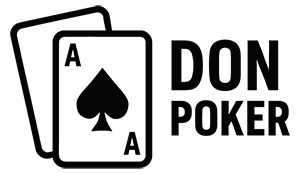Understanding Bankroll Management
Let’s face it: if you’re a poker player without a grip on bankroll management, you might as well be a duck trying to fly—flapping around aimlessly until you crash into a tree. Bankroll management is the art of using your poker funds wisely and ensuring you stick around long enough to face your destiny. You want to keep your money and avoid the deep soul-searching that happens when you catch a glimpse of your ATM balance.
The 5% Rule: How to Keep Your Sanity
One golden rule in the poker world is to never risk more than 5% of your total bankroll in a single game. This isn’t a suggestion; it’s practically a sacred law. If you walk into a cash game with a $1,000 bankroll, the most you should buy in for is $50. That way, your finances won’t resemble a rollercoaster ride at your local carnival.
Think of it as buying a car. You wouldn’t drop $30k on a car you can’t afford just because it has a great radio, would you? Sure, playing a higher stake is tempting, but you’ll end up crying at the ATM instead of enjoying your poker night. Keep your betting sensible, and may the odds ever be in your favor!
Set Your Limits: Not Just for the Gym
Setting limits isn’t just for bad jokes or New Year’s resolutions—it’s also vital in poker. Determine how much you’re willing to lose in a session before your chips start vanishing faster than my willpower at a buffet. Decide on a loss limit, and if you hit it, walk away. Seriously, there’s nothing worse than digging deeper into your pockets, hoping for a miraculous comeback, while the poker gods cackle at your misfortune.
Investing in your self-discipline will save you from those regret-filled walks to the ATM. Plus, you’ll thank yourself later when you’re not begging your roommate to lend you money for rent. It’s tough love, but it’s necessary love!
Tracking Your Progress: The Money Chronicles
Think you can wing it? Well, good luck with that! If you’re not tracking your winnings and losses, you’re playing poker in the dark—literally. Keeping a record of your sessions helps you understand what’s working and what’s as useful as a screen door on a submarine.
Use a spreadsheet, or do it the old-fashioned way in a notebook. Just write it down! You’ll spot patterns, learn from your mistakes, and celebrate your victories without needing a motivational poster on your wall. Knowing your numbers will steer you clear of risky plays and keep your financial ship sailing smooth.
The Emotional Aspect: Keeping It Together
Let’s discuss the elephant in the room: emotions. If you’re constantly stressed about your bankroll, it’s going to affect your game. You can’t play like a poker legend while worrying about paying bills. Newsflash—nobody wants to see you crying into your chips because you blew your entire bankroll on a hunch. You might even consider it performance art; I don’t.
Take breaks, enjoy your time away from the felt, and keep a healthy relationship with your money. Remember, poker is supposed to be fun, not a source of anxiety that makes you contemplate a career in interpretive dance!
Final Thoughts: Avoiding an ATM Meltdown
Bankroll management might not sound glamorous, but it’s a crucial skill that separates the pros from the amateurs. Stick to smart strategies, know your limits, track your gameplay, and balance your emotions. That way, you’ll be visiting an ATM only for legitimate reasons—like getting cash for your lunch, not crying over your mismanaged poker funds.
Embrace these tips, and may your chips stay stacked higher than your regrets. After all, a solid bankroll management strategy means you’ll have more time to focus on what truly matters: bluffing your way to the top while wearing sunglasses indoors!
